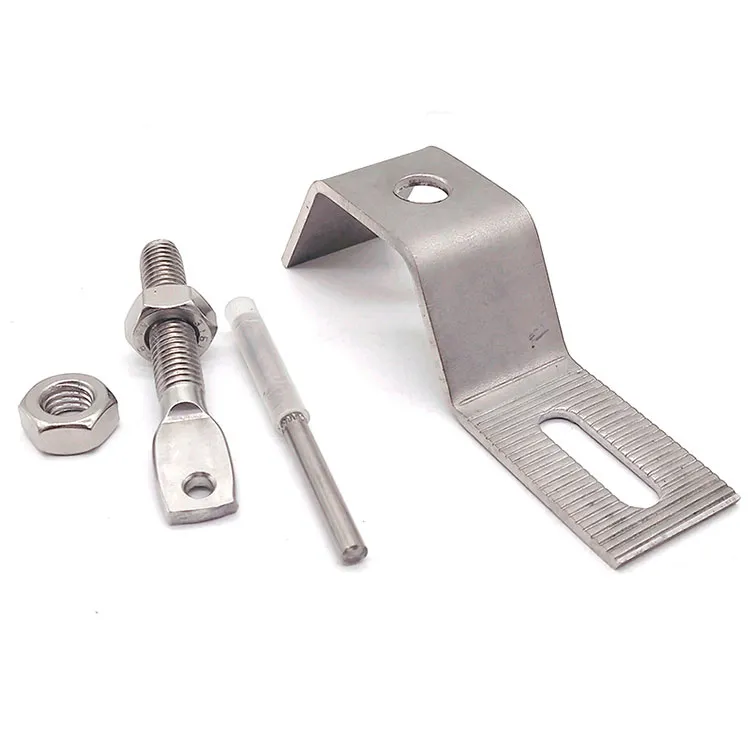Mounting Brackets: Essential Support Components for Stability and Versatility
2024-10-23
Mounting brackets are small yet essential hardware components used in various industries and everyday applications to provide structural support, stability, and secure attachment of objects. Whether you're installing shelves, mounting a television, or setting up industrial machinery, mounting brackets play a critical role in ensuring that equipment and objects are safely and securely positioned.
In this blog, we’ll explore the types of mounting brackets, their common uses, the materials they’re made from, and why they’re indispensable in modern design and construction.
What is a Mounting Bracket?
A mounting bracket is a metal, plastic, or composite support structure used to fasten one object to another, typically a surface like a wall, ceiling, or vehicle. They come in various shapes and sizes, depending on their intended application, and are usually fixed in place with bolts, screws, or other fasteners. Their primary function is to distribute weight evenly and ensure stability.
Mounting brackets can be found in homes, offices, industrial settings, automotive applications, and even in electronics, offering a simple yet reliable way to secure and support a wide variety of items.

Types of Mounting Brackets
1. L-Shaped Brackets
The L-shaped bracket is one of the most common and versatile types. It forms a right-angle (90 degrees) and is used for corner support, typically in shelving units, furniture, or cabinetry. The design allows the weight of an object to be distributed between the two surfaces it is mounted to.
Applications: Shelves, cabinets, corner installations.
2. Z-Brackets
Z-brackets are typically used when objects need to be mounted at different levels or offsets. Their unique shape resembles the letter “Z,” and they are often found in solar panel installations, signage, or specific structural applications where multi-level support is required.
Applications: Solar panels, signs, machinery.
3. U-Brackets
U-shaped brackets are designed for supporting cylindrical or round objects like pipes, tubes, or conduit systems. Their shape provides a secure fit for the object they are mounted around, ensuring stable and centered positioning.
Applications: Plumbing, electrical conduits, pole or tube installations.
4. Adjustable Brackets
Adjustable brackets offer flexibility in height, angle, or positioning. These are often used for installations that may require future adjustments, such as televisions, audio systems, or other electronics that need to be repositioned for optimal viewing or performance.
Applications: TV mounts, adjustable shelving, industrial machinery.
5. Flat Brackets
Flat brackets, sometimes called plates or straight brackets, are simple, flat metal pieces with multiple holes for fastening. These brackets are commonly used for reinforcing joints or connections between two surfaces or objects.
Applications: Reinforcing furniture joints, fixing broken frames, or connecting surfaces.
6. Hanging Brackets
Hanging brackets are designed to hold objects from above. These are often used for hanging lighting fixtures, planters, or signs from ceilings or overhead structures.
Applications: Lighting fixtures, hanging decorations, plant holders.
Common Materials Used for Mounting Brackets
1. Stainless Steel
Stainless steel is commonly used for mounting brackets because of its excellent durability, resistance to corrosion, and strength. It’s especially useful in outdoor applications, as it can withstand exposure to harsh environmental conditions without rusting.
Applications: Outdoor structures, marine environments, heavy-duty installations.
2. Aluminum
Aluminum brackets are lightweight yet strong, making them ideal for applications where weight is a concern, such as in vehicles or electronics. Aluminum also has good corrosion resistance, though not as robust as stainless steel.
Applications: Automotive components, aerospace, lightweight structures.
3. Plastic
For lighter loads, plastic brackets offer an affordable, corrosion-resistant solution. They are commonly used for smaller items like electrical outlets, lightweight shelves, or electronic devices. However, plastic is not ideal for heavy-duty or outdoor applications as it can degrade over time when exposed to UV light.
Applications: Lightweight shelving, electronics, indoor applications.
4. Carbon Steel
Carbon steel is a strong and affordable material used for heavy-duty brackets. Although it is less resistant to corrosion than stainless steel, it is often coated with protective finishes like zinc or powder coatings to enhance its longevity in different environments.
Applications: Industrial equipment, automotive mounting, building supports.
5. Brass and Copper
For aesthetic purposes, brass and copper brackets are often used in decorative furniture, lighting fixtures, or home décor. While not as strong as steel, these materials provide a unique, polished look that is ideal for interior design applications.
Applications: Decorative fixtures, interior furniture, antique-style installations.
Applications of Mounting Brackets
1. Home and Office Furniture
Mounting brackets are essential for assembling and securing furniture such as tables, desks, shelving units, and cabinets. They provide the necessary support to keep furniture stable and prevent accidents.
2. Electronics and TV Mounting
Brackets are widely used for mounting televisions, speakers, and other electronics onto walls, allowing for more floor space and optimal viewing angles. Adjustable mounting brackets for TVs also enable flexibility in positioning.
3. Automotive and Aerospace
In vehicles, mounting brackets are used to secure various components like engines, radiators, and exhaust systems. They provide the durability needed to keep these parts in place despite the vibrations and movement experienced during operation.
4. Solar Panels and HVAC Systems
Specialized mounting brackets are used to install solar panels, HVAC systems, and other large equipment on roofs or walls. These brackets ensure that the equipment remains stable even in harsh environmental conditions.
5. Industrial and Construction Use
In industrial environments, mounting brackets are used to install heavy machinery, conveyor systems, and structural supports. Their load-bearing capacity is critical for ensuring the safety and functionality of these systems.
6. Signage and Displays
Mounting brackets are also used in advertising and retail for installing signs, banners, and display boards. Whether they’re mounted on walls or hanging from ceilings, these brackets ensure that signage is secure and visible.
Benefits of Using Mounting Brackets
1. Versatility
Mounting brackets come in a wide variety of designs and sizes, making them suitable for an endless range of applications. Whether for simple home projects or large industrial installations, there's always a bracket that fits the job.
2. Durability
Made from strong materials like stainless steel or carbon steel, mounting brackets provide long-lasting support. This makes them essential in industries where safety and reliability are paramount.
3. Ease of Installation
Mounting brackets are easy to install, requiring only basic tools like drills and screws. Most brackets come pre-drilled, making the installation process straightforward and efficient.
4. Cost-Effective
Despite their durability and functionality, mounting brackets are affordable. They offer a cost-effective solution for securing items without needing complex systems or additional equipment.
5. Aesthetic Value
Some brackets, especially those made from brass or copper, are designed with aesthetics in mind. These decorative brackets add a stylish touch to home décor, making them both functional and visually appealing.
Conclusion
Mounting brackets may seem like a small component, but their role in providing stability and support is crucial across various industries and applications. Whether you're mounting a TV in your living room, installing industrial machinery, or setting up solar panels, the right mounting bracket ensures safety, durability, and efficiency.
Choosing the appropriate bracket for your project depends on the load capacity, environment, and material requirements, but with so many types available, there’s always a solution to fit your specific needs.


